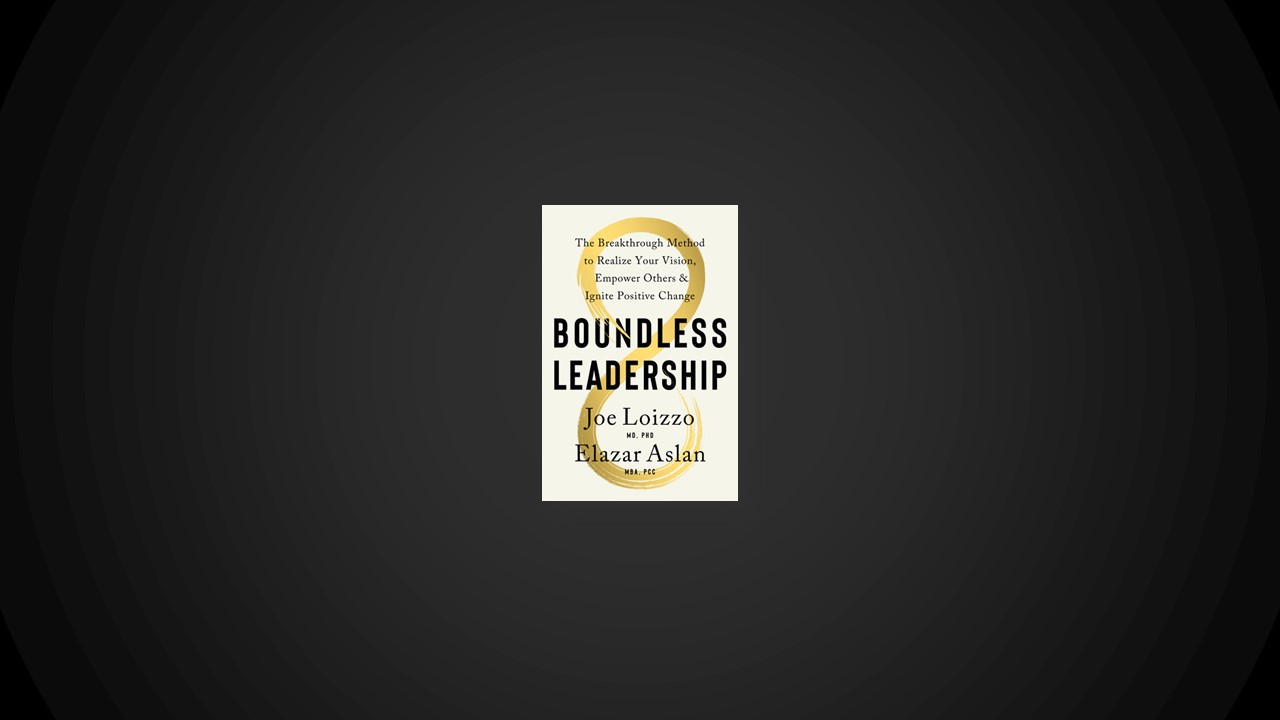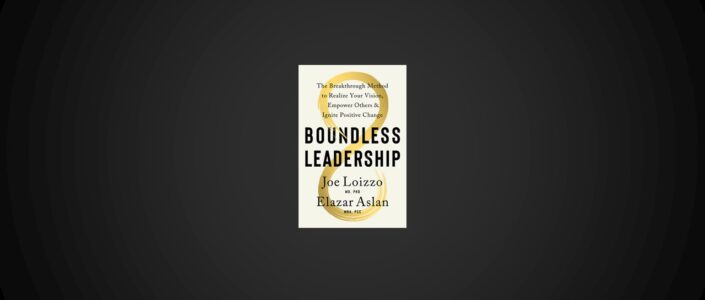Leadership Is an Inside Job
We’ve all heard that one of the critical aspects of being a good leader, never mind a boundless leader, is agility of mind. But the agility it takes to change our thinking given new external data doesn’t hold a candle to the agility we gain by becoming more self-aware. If you’re not self-aware, you’re not able to self-correct.
Picture the people around a conference table at a meeting. Each sees their own agenda—What about the budget? Why won’t they see my idea? When can I go to lunch?—and often discussions run parallel instead of toward a decision or a conclusion. Being able to shift perspective and see the whole is attentional flexibility in action. But we won’t be able to shift as long as we stay unwittingly stuck in our biased agenda and point of view. The capacity to shift adroitly is most important not in terms of shifting our strategy or execution but in terms of shifting who we really are—that is, when it comes to our short- and long-term development as leaders. If we can watch how we’re able to develop awareness over time we’re able to direct our attention toward those qualities that are going to empower us to be more effective as leaders or humans
Presence: The Brain Is a Social Organ
When it comes to how presence affects clarity, remember that clarity is the highest capacity of our new brain and the result of the primal, self-protective parts of our brain feeling safe enough to let the newer, more sociable parts of our brain lead. It’s where our attention is most nimble and our consciousness is the most expansive, hence where we have the most flexible, fine-tuned engagement.
But being in mammalian mode requires much more than just an absence of imminent danger. If we’re not getting and giving messages of safety and connection, our nervous systems are not fully in mammalian mode but in a more frazzled, fractured, and self-limiting rut. Without a regular diet of safety cues, our brains default into survival mode, which involves fragmenting and internal blocking of our capacity for attention, clarity, and awareness.
Most of the messages we receive when we pay attention to our bodies here and now are reassuring, in contrast with the messages we receive when our mind is on autopilot, operating in survival mode, and tainted by negativity bias. As you’ll see, this practice of tuning in to and repeatedly breathing in the good news of being alive and well in the here and now will, over time, allow you to ground your mind and brain in reassurance, creating clarity, openness, and engagement as you’ll be truly present.
1 Settle into a comfortable sitting or lying posture on a chair, cushion, yoga mat, or bed.
2 Turn your attention to the place in your body where you most sense your breathing.
3 When you get distracted or dull, keep patiently returning to where you sense the breath.
4 Focused on the breath, practice feeling present here and now.
5 Continue this practice for as long as you can without stress or fatigue—say, five to twenty minutes.
6 Return to the practice, ideally at a regular time and place, three to seven days a week.
7 Tune in to this practice for brief presence pauses when distracted or dull in daily life.
Balance: Developing True Confidence
Presence is related to balance in boundless leadership. The second quality in the discipline of mind, balance is a key factor supporting the competence of clarity. It involves an ongoing process and continuous challenge for leaders who want to stay connected to their strength, since it entails getting back on track when distracted, diverted, pumped up, or knocked down.
Getting centered must be followed by staying centered, and becoming present and balanced over time requires the capacity to keep our center of gravity somewhere in the middle ground. But balance is not about a rigid, frozen, or blandly moderate stance. To the contrary, balance refers to the agility, nimbleness, or grace that allows us to catch ourselves when external or internal forces push us from one extreme to the other, allowing us to return to a more fluid, centered responsiveness that we think of as equanimity.
1 Settle into a comfortable sitting or lying posture on a chair, cushion, yoga mat, or bed.
2 Turn your attention to the place in your body where you most sense your breathing.
3 When you get distracted or dull, keep patiently returning to where you sense the breath.
4 Spread your awareness gradually throughout your whole breathing body.
5 Scan your whole body for areas of pleasant, unpleasant, and neutral sensations.
6 Release reactive clinging to pleasant, pushing away unpleasant, and ignoring the neutral.
7 Practice savoring the pleasant, soothing the unpleasant, and appreciating the neutral.
8 Return to the practice, ideally at a regular time and place, three to seven days a week.
9 Tune in to this practice to restore balance when you feel reactive in daily life.
Unbiased Awareness: Escaping the Trap of Fixed Judgment
A leader’s effectiveness will be diminished if they lack the capacity for unbiased awareness—the third quality of the discipline of mind that breeds clarity. Unbiased awareness is the ability to be present to reality as it is, free from preconceived ideas or programming, not swayed by polarizing positive or negative biases, attachment, or aversion, and not disconnected or distanced from the nuances and complexities of genuine experiences.
How is unbiased awareness different from ordinary awareness? In ordinary awareness, we unconsciously filter our experience through implicit biases, innate and learned. We have a preconceived notion of how things should be—often based on wishful thinking or worst-case fears—and that notion becomes a filter that limits or removes the vital information we need, like the complex way people and things combine strengths and weaknesses, are constantly in flux, and are invariably relative and contextual. We see things in a biased way because we expect or desire a certain outcome, so we look for data that supports our point of view as opposed to seeing what is really going on and making our best decisions.
1 Settle into a comfortable sitting or lying posture on a chair, cushion, yoga mat, or bed.
2 Turn your attention to the place in your body where you most sense your breathing.
3 When you get distracted or dull, keep patiently returning to where you sense the breath.
4 Once your mind settles, turn your attention to the awareness that’s watching the body.
5 Move through the usual thoughts, feelings, and images to the clarity of awareness itself.
6 Practice resting in that awareness, letting go of habitual thoughts, feelings, and images.
7 Try to immerse and expand your mind in that clear, still, open awareness for five to fifteen minutes.
8 Return to the practice, ideally at a regular time and place, three to seven days a week.
9 Tune in to this practice to free and clear your mind of biases that block you in daily life.
Discernment: The Key to Incisive Decisions
Discernment—the fourth quality of mind—is what emerges when we make a point to attend to our experience from the vantage of unbiased awareness. In boundless leadership, our understanding of discernment differs dramatically from the conventional take. We see it as based not upon perspectives and judgments derived from past experience but rather on our ability to break free from the past and see things freshly as they are here and now. This clear discernment involves the ability to see the whole field—the panorama—to recognize what matters most within it, and to consider what happens when those elements are in conflict.
Unbiased awareness gives us the perspective to see things more clearly and fully—without judgment—as it allows us to collect more accurate and current information. However, it’s discernment that gives us the ability to analyze and assess that information in light of our evolving needs and interests as well as within the larger context of our community, company, and ultimately a constantly changing world. As we seek the clarity to make more sound decisions, discernment comes early in the decision-making process, where we try to align our current assessment of the information at hand with our present intentions. Based on how our needs align with the facts on the ground, we’re prepared to discern the best course of action here and now.
1 Settle into a comfortable sitting or lying posture on a chair, cushion, yoga mat, or bed.
2 Turn your attention to the place in your body where you most sense your breathing.
3 When you get distracted or dull, keep patiently returning to where you sense the breath.
4 Once your mind settles, turn your attention to the awareness that’s watching the body.
5 Move through the usual thoughts, feelings, and images to the clarity of awareness itself.
6 Make that open awareness a workspace to reassess habits of mind, speech, and action.
7 Discerning which habits limit you and which habits empower you, let go of the former and develop the latter.
8 Return to the practice, ideally at a regular time and place, three to seven days a week.
9 Tune in to this practice to discern the most empowering course of action in daily life.
Application: Leveraging the Power of Intention
As you work with the discipline of mind within boundless leadership, you’ll engage the practices, strengthen the qualities, and develop more clarity. One of the best ways you can bring this clarity into play is by better understanding your intentions. Conflicting intentions often lie at the root of our most ill-advised efforts. For instance, if someone criticizes us, we often feel the need to correct them. We may feel that we’re being helpful by setting the record straight, but our critic feels we’re being defensive and are not listening or taking responsibility.
If we examine our intentions in a situation like this, we might notice that underlying our conscious intention to correct an error there is a deeper, unconscious intention to punish our critic for embarrassing, diminishing, or challenging us. When conflicting intentions motivate our actions and reactions, they create a dissonance that detracts from our effectiveness. Metaphorically, it’s as if we’re facing in one direction while our bodies are moving in another. In other words, intention has its own physics: if you try to satisfy conflicting needs simultaneously, then like an object impacted by a variety of forces, the result of your actions will be diminished to the degree that your intentions are scattering rather than aligning your aim.
On the other hand, when we bring clarity to the workings of our minds, we are able to refine our complex set of intentions and can consciously choose the intention that best aligns with our individual and organizational interest. When we can choose our lead intention and redirect our conflicting intentions accordingly, the impact and benefit of our decisions and actions are increased.


